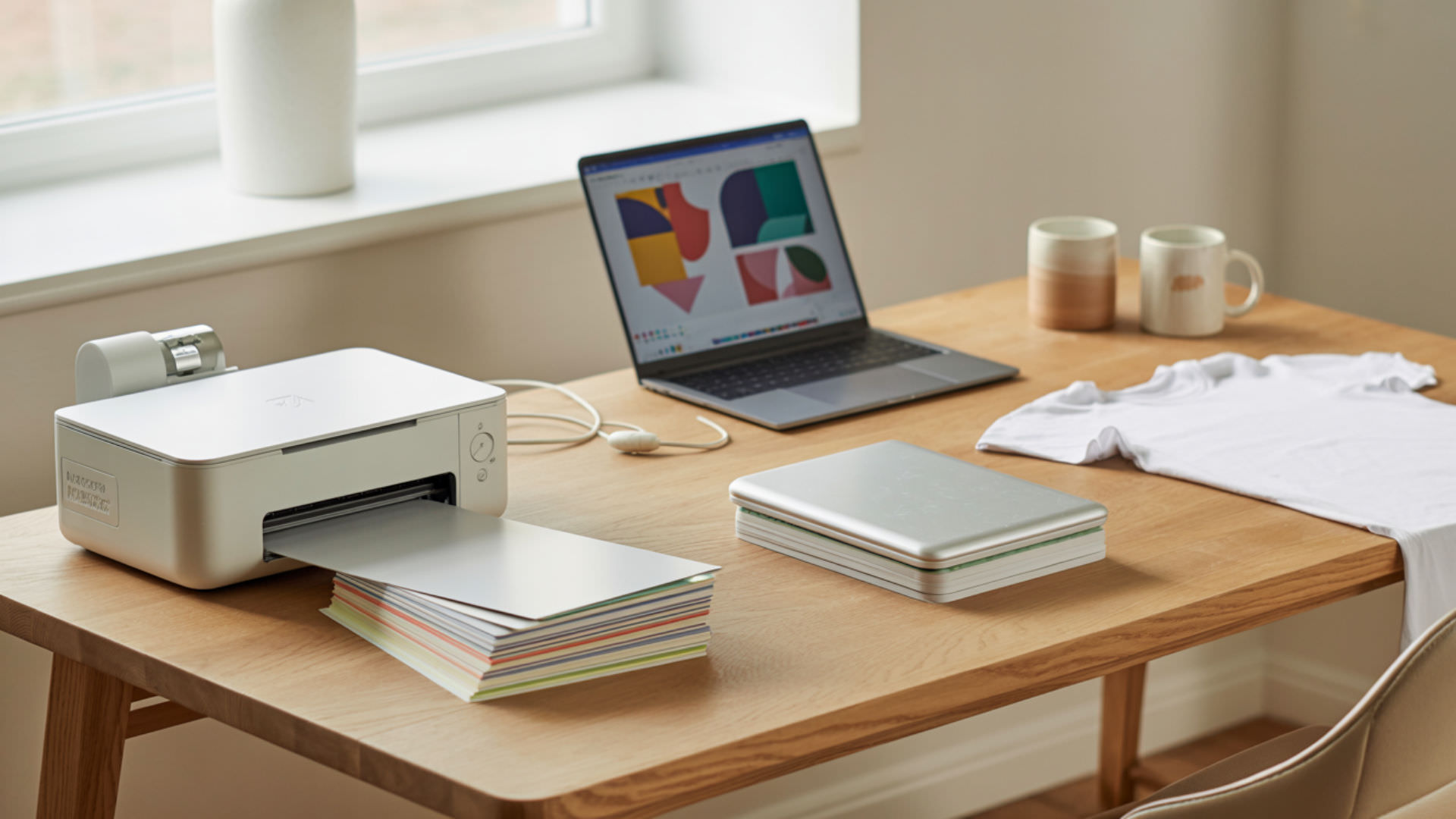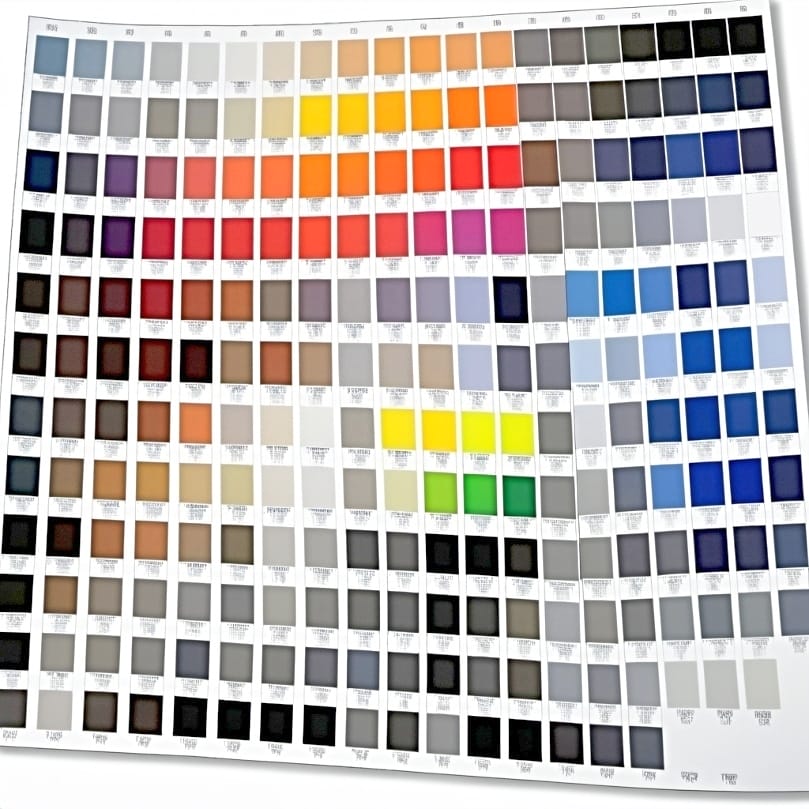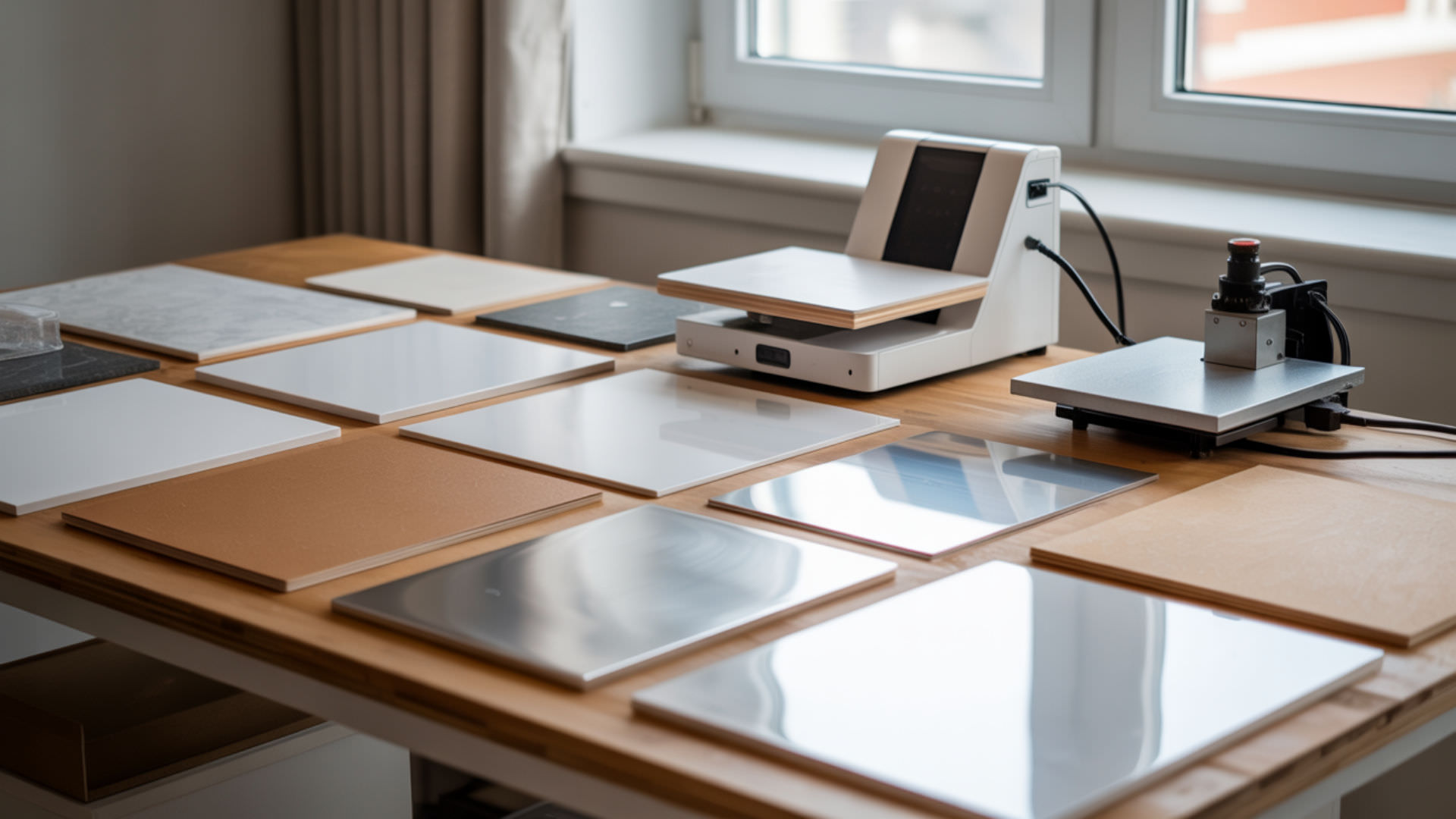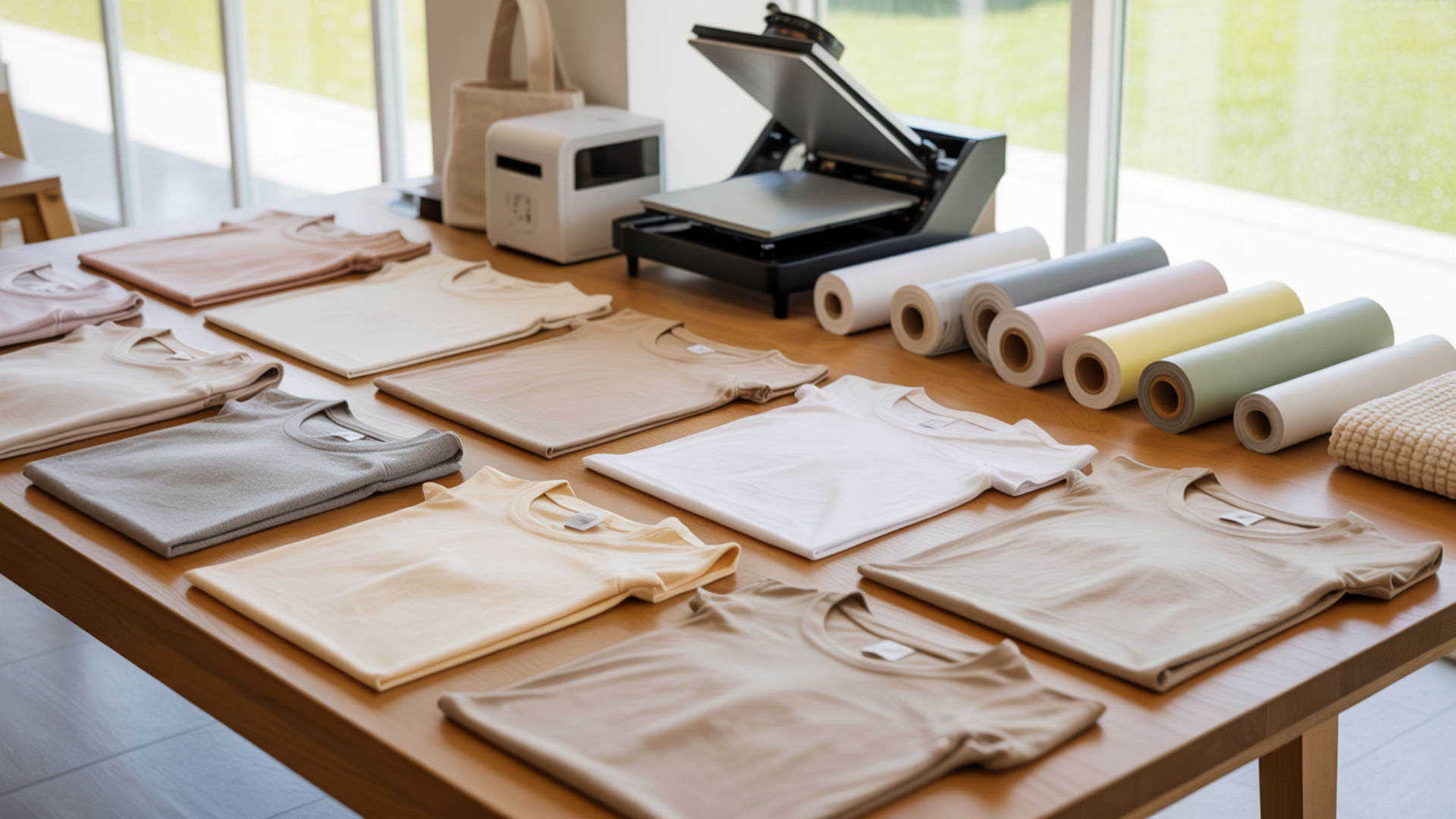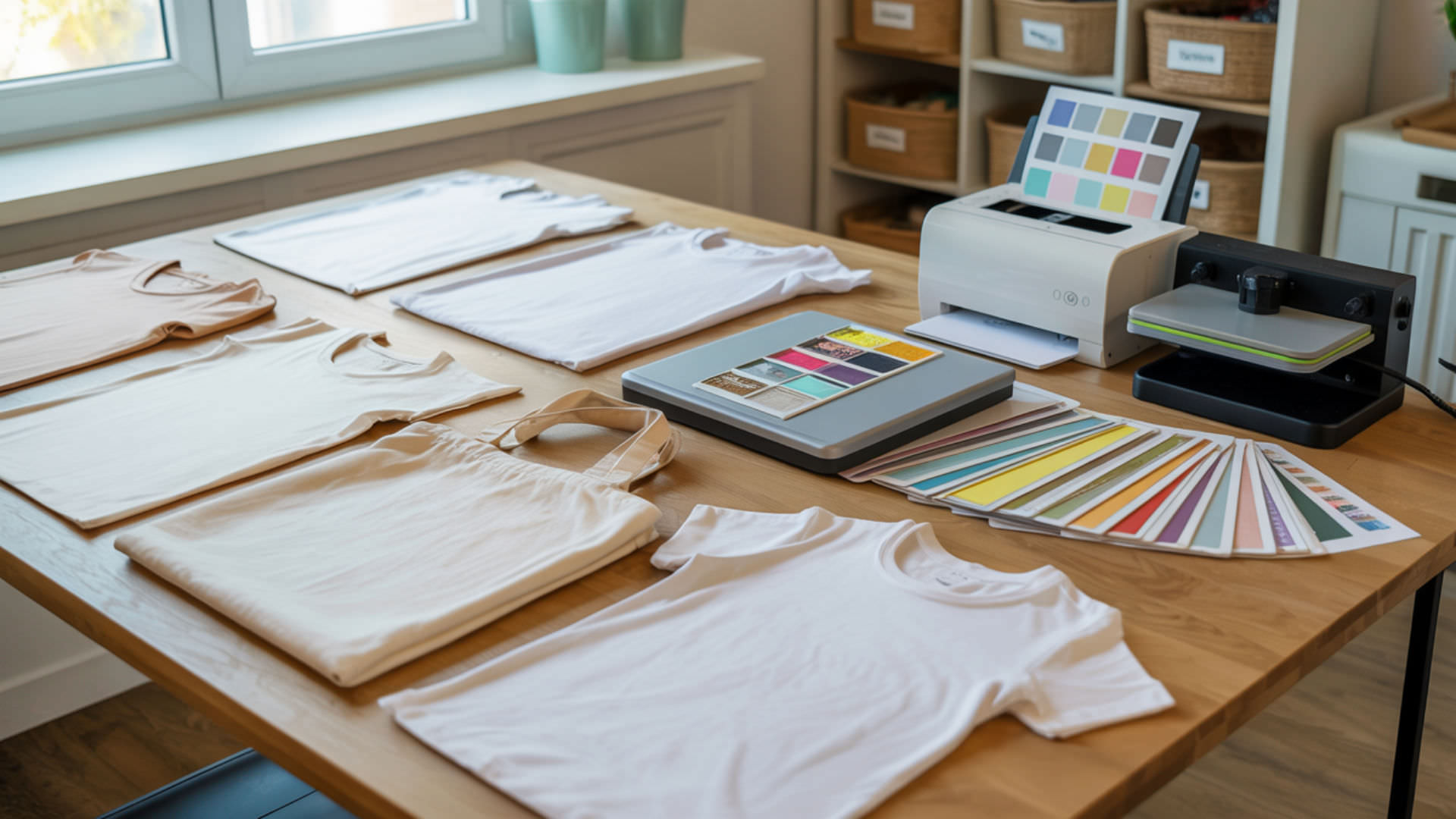Table of Contents
ToggleInkjet printing and dye-sublimation represent two distinct approaches to digital printing with fundamentally different mechanisms. Inkjet printing deposits liquid droplets of ink onto surfaces through tiny nozzles, creating images on paper, canvas, and various substrates. Dye-sublimation uses dye diffusion—heat converts solid dye to gas that penetrates polyester fibers or polymer-coated surfaces permanently. Our complete guide on sublimation vs other printing methods explains how dye diffusion distinguishes sublimation from all surface-based print technologies.
Key Takeaways
- Sublimation’s phase change converts solid dye to gas at 380–400°F, bonding color permanently within polyester fibers—prints last the substrate’s lifetime.
- Inkjet uses non-contact printing—droplets eject without pressure and sit on surfaces, making prints prone to fading, smudging, and water damage over time.
- Only piezoelectric inkjet printers can be converted to sublimation; thermal inkjet models from HP, Canon, and Lexmark are incompatible with sublimation inks.
What’s the real difference between inkjet and dye sublimation printers?
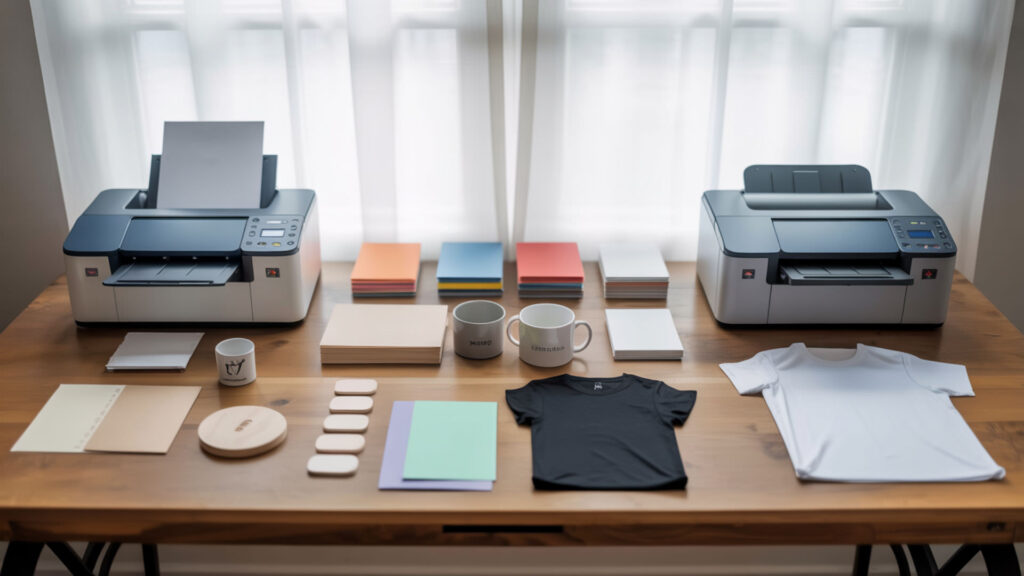
Standard inkjet printers spray droplets of ink onto surfaces where they dry and remain on top of the material—visible as a layer that can fade, smudge, or wash away. Dye-sublimation uses dye diffusion where heat converts dye to gas that penetrates polymer coating or polyester fibers permanently. This contrast between surface deposition vs fiber infusion also distinguishes sublimation from laser printer technology.
What is the difference between inkjet and sublimation?
Inkjet printing ejects liquid ink droplets through microscopic nozzles onto surfaces where ink absorbs or sits on top of materials. Sublimation requires a phase change—solid dye converts directly to gas under heat at 380–400°F, bypassing the liquid state entirely. This gas penetrates polyester fibers and polymer coatings, becoming part of the substrate rather than a surface layer. Sublimation relies on a phase change where a solid converts directly into a gas when heated, a process explained in standard physical chemistry texts describing phase transitions in matter.[1]
Is dye sublimation printer the same as inkjet printer?
Dye-sublimation printers are technically modified inkjet printers that use specialized sublimation inks instead of standard aqueous inks. The critical distinction lies in printhead technology: piezoelectric inkjet heads (Epson) use pressure crystals and can be converted for sublimation safely. Thermal inkjet heads (HP, Canon, Lexmark) use heat to eject ink—this heat destabilizes sublimation dyes and causes clogging. Research from the National Institute of Standards and Technology explains how piezoelectric actuators generate pressure-based droplet ejection without heat, making them compatible with sublimation dyes. [2]
Can you actually convert an inkjet printer to sublimation?
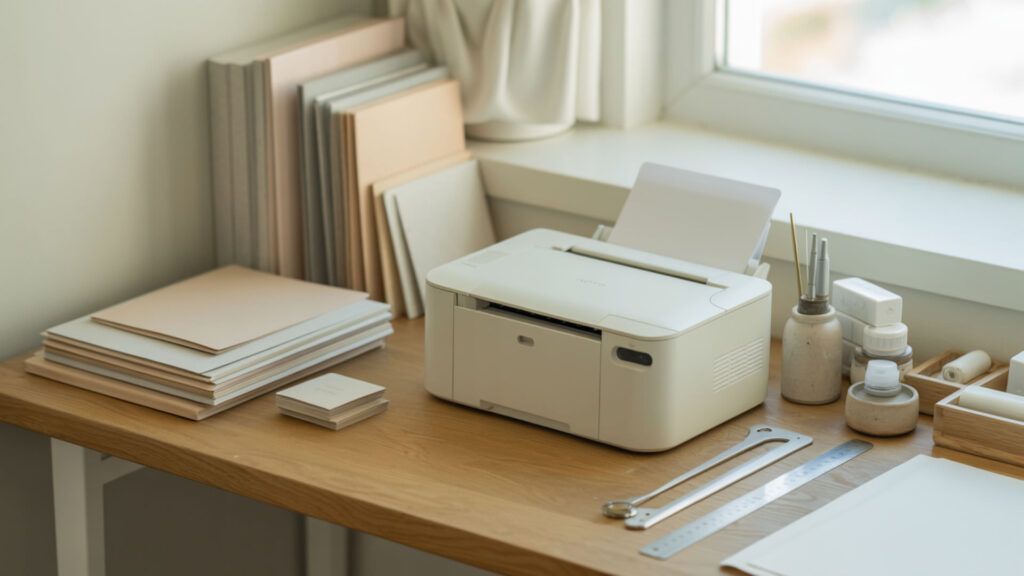
Only piezoelectric inkjet printers can be converted to sublimation—primarily Epson EcoTank models with Micro Piezo printheads. The conversion requires filling tanks with sublimation ink (never mixing with aqueous ink), using sublimation transfer paper, and accepting voided warranty. Printers must be new and never used with standard ink to prevent contamination. Our guide on the best printer for T-shirt printing compares piezoelectric printhead models and conversion compatibility for business decisions.
Can I put sublimation ink in my inkjet printer?
You cannot put sublimation ink in thermal inkjet printers from HP, Canon, Lexmark, or Dell. Thermal inkjet technology uses heat to eject ink droplets, and this heat destabilizes sublimation dyes before they reach the paper. Only piezoelectric inkjet printers (primarily Epson models) safely deliver sublimation ink because they use pressure crystals rather than heat to eject droplets.
⫸ Click Here For Best Selling Sublimation Printers And Products ⫷Can inkjet printers use sublimation ink?
Most inkjet printers cannot use sublimation ink because their nozzle and printhead systems are designed specifically for aqueous ink formulations. Mixing sublimation ink with residual aqueous ink causes chemical reactions that clog nozzles permanently. Converted printers must start with virgin ink systems—any previous ink use contaminates the printhead and prevents successful sublimation output.
Which printing method actually lasts longer?
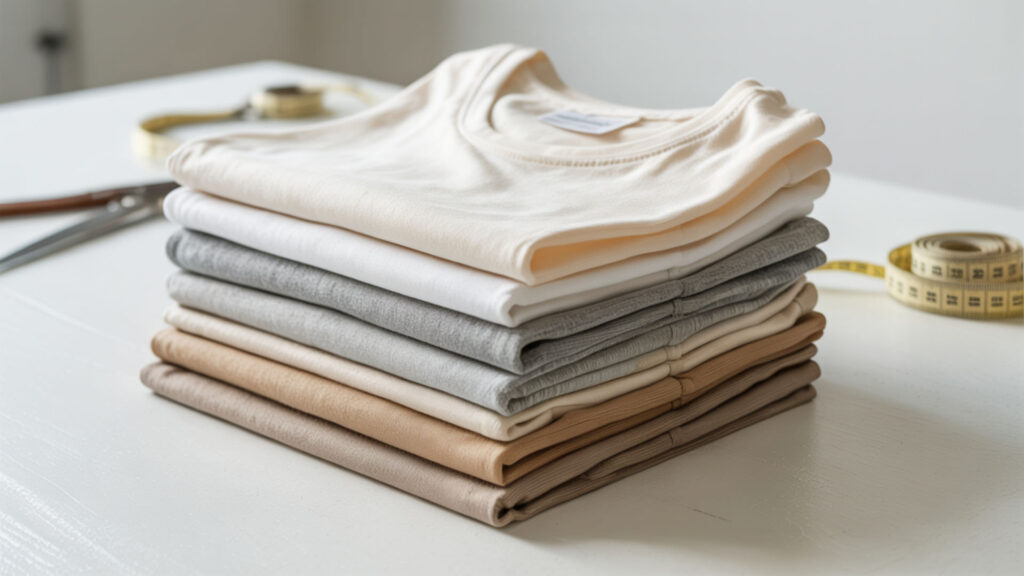
Sublimation dramatically outlasts standard inkjet printing because dye becomes part of the substrate rather than sitting on top. Durability differences stem from surface deposition vs fiber infusion: inkjet ink fades, smudges, and washes away over time; sublimation dye bonds permanently within polyester fibers. Similar durability differences apply when comparing sublimation to DTF printing—both DTF and inkjet rely on surface adhesion.
Is inkjet ink better than sublimation ink?
Inkjet’s aqueous ink excels for paper documents and photo printing where cost and speed matter most. Sublimation ink wins for merchandise and apparel because dye diffusion creates permanent, wash-resistant, fade-proof prints on polyester. Neither is universally better—inkjet suits general-purpose printing; sublimation dominates custom products requiring long-term durability on compatible substrates.
Which is better inkjet or dye sublimation printer?
The better choice depends on your application. Inkjet offers versatility—printing on paper, cardstock, canvas, and various materials at high print resolution up to 4800+ DPI. Sublimation delivers continuous-tone printing with smooth photographic gradients on polyester merchandise. Inkjet suits documents and paper photos; sublimation excels at apparel, mugs, and promotional products requiring permanent decoration.
What’s the difference between inkjet ink and sublimation ink?

Standard inkjet ink is aqueous (water-based) and designed to absorb into paper fibers or sit on coated surfaces where it dries. Sublimation ink contains special dyes that remain stable until heated—the phase change at 380–400°F converts solid dye directly to gas without becoming liquid. These fundamentally different chemistries make the inks completely incompatible with each other’s printing systems.
Can inkjet ink be used for sublimation?
Standard inkjet aqueous ink cannot be used for sublimation because it lacks the chemical properties required for dye diffusion. When heated, aqueous ink burns, smears, or evaporates rather than converting to gas that penetrates fibers. Only specially formulated sublimation inks contain the dye chemistry necessary to transition directly from solid to gas under heat and bond with polyester.
Can I use inkjet ink for sublimation?
Using standard inkjet ink for sublimation will fail completely. Inkjet ink is designed for paper and coated paper absorption—when subjected to sublimation’s heat, pressure, and time (380–400°F for 35–60 seconds), the ink scorches, smears, or produces no transfer at all. The heat required for sublimation destroys aqueous ink rather than activating it for fiber penetration.
Which specific printer brands work for sublimation?
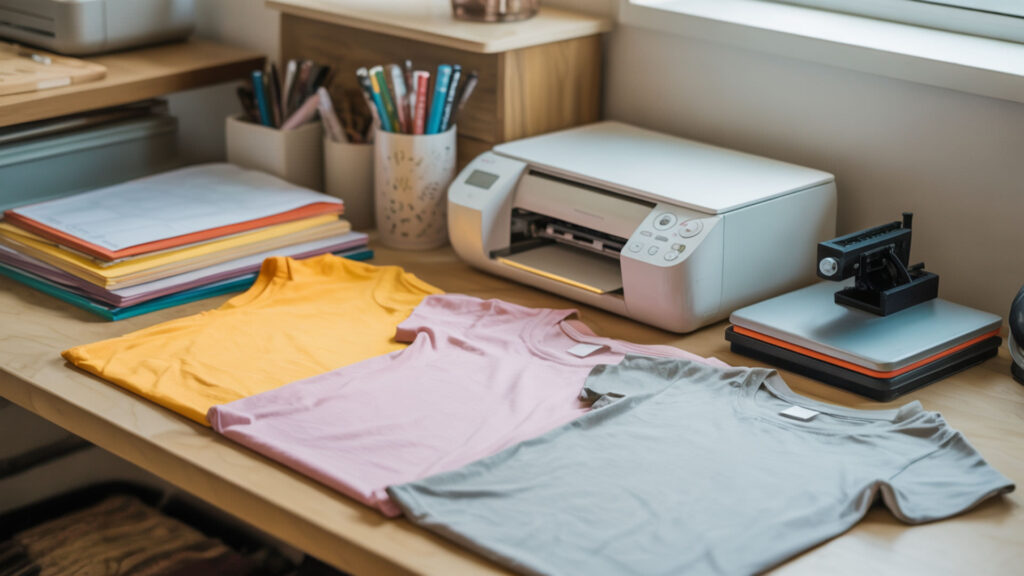
Epson dominates sublimation conversions because their piezoelectric inkjet technology safely handles sublimation inks. Popular conversion models include EcoTank ET-2800, ET-2850, and ET-15000. Purpose-built sublimation printers from Sawgrass (SG500, SG1000) and Epson SureColor series offer dedicated sublimation workflow with sublimation transfer paper compatibility.
Is inkjet good for sublimation?
Piezoelectric inkjet technology works well for sublimation because it uses non-contact printing through pressure-driven droplet ejection rather than heat. This allows sublimation dyes to remain stable during printing. However, thermal inkjet models cannot sublimate—you need specific piezoelectric models, primarily from Epson, either converted or purpose-built for sublimation ink delivery.
Are all inkjet printers sublimation?
Most inkjet printers cannot perform sublimation. Standard inkjet printing uses aqueous inks incompatible with sublimation chemistry. Thermal inkjet models (HP, Canon, Lexmark, Dell) use heat that destabilizes sublimation dyes. Only piezoelectric inkjet printers—primarily Epson models—can be converted or purchased as dedicated sublimation units. The technologies overlap minimally despite similar droplet-delivery mechanisms.
What are the main problems with inkjet printers versus sublimation?
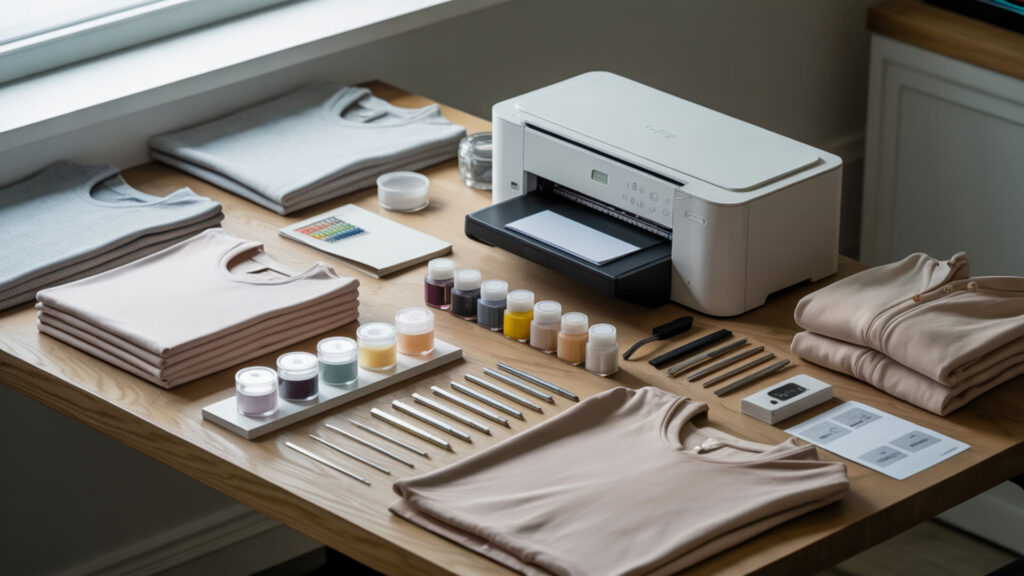
Inkjet printers face nozzle and printhead clogging when unused—ink dries in microscopic channels, requiring cleaning cycles that waste ink. Durability differences favor sublimation for merchandise because inkjet prints fade, smudge, and lack water resistance. Substrate limitations restrict inkjet primarily to paper materials, while sublimation creates permanent decoration on polyester fabrics and polymer-coated hard goods.
Do inkjet printers use a lot of ink?
Inkjet printers consume significant ink through automatic cleaning cycles that fire droplets of ink through nozzles to prevent clogging. Higher print resolution settings increase DPI and require more droplets per square inch—photo-quality prints consume substantially more ink than draft documents. Startup cleaning cycles alone can consume considerable ink each time the printer powers on.
How often should you use an inkjet printer?
Use inkjet printers at least weekly to prevent nozzle and printhead clogging from dried ink. Idle printers develop clogs in microscopic ink channels, requiring cleaning cycles that waste ink and may not fully restore print quality. For infrequent printing needs, sublimation offers advantages—sublimation ink doesn’t dry in nozzles the same way aqueous inkjet ink does during idle periods.
How do you use an inkjet printer for sublimation step-by-step?
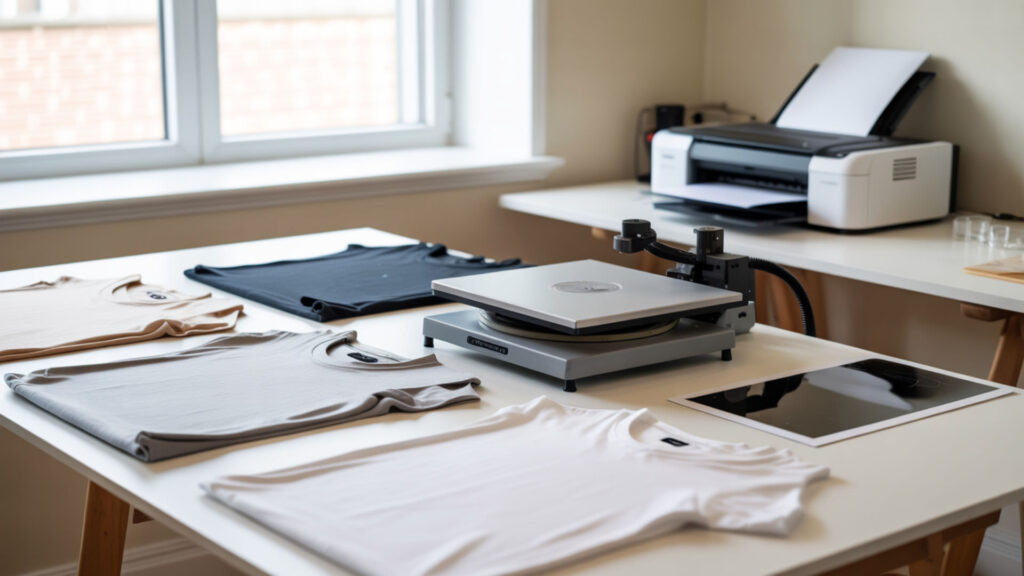
- Acquire a new piezoelectric inkjet printer (Epson EcoTank recommended) that has never been powered on or filled with ink. Virgin printers prevent contamination from previous aqueous ink; converted printers void manufacturer warranty.
- Fill ink tanks with sublimation ink using separate syringes for each color to prevent cross-contamination. Never mix sublimation ink with standard inkjet ink—use one brand throughout for consistent color output.
- Initialize the printer following manufacturer instructions and run test prints to verify ink flow through all nozzles. Initial setup may require multiple cleaning cycles; install ICC color profiles for accurate color reproduction.
- Create your design at 300 DPI, mirror the image horizontally, and print onto sublimation transfer paper with the coated side up. Mirroring ensures correct orientation after transfer; allow 2–3 minutes for ink to dry before handling.
- Pre-press your polyester substrate for 3–5 seconds to remove moisture, then position transfer paper face-down and secure with heat-resistant tape. Moisture causes ghosting; tape prevents movement during the heat pressing process.
- Apply heat, pressure, and time at 380–400°F with medium pressure for 35–60 seconds to complete sublimation transfer. These parameters trigger the phase change that converts solid dye to gas for permanent fiber infusion.
Ready to Choose Your Printing Method?
Your choice depends on output requirements and budget priorities. Inkjet printing offers versatility and lower startup costs for paper-based documents and photos. Sublimation’s phase change process delivers permanent, photographic-quality prints on polyester merchandise—superior durability but limited to compatible substrates. Many businesses operate both systems to cover different product categories.
Frequently Asked Questions
What is a sublimation inkjet printer?
A sublimation inkjet printer is a piezoelectric inkjet printer filled with sublimation ink instead of standard aqueous ink. It prints dye onto sublimation transfer paper, which then transfers to polyester or polymer-coated substrates under heat and pressure. The printer component handles digital-to-paper output; a separate heat press completes the sublimation transfer process.
What is sublimation paper for an inkjet printer?
Sublimation transfer paper is specialty paper with a polymer coating designed to hold sublimation dye until heat releases it. Unlike regular inkjet paper that absorbs ink, sublimation paper’s coating prevents dye absorption so maximum color transfers during pressing. Using standard inkjet paper with sublimation ink results in poor transfers because dye absorbs into paper fibers rather than releasing onto substrates.
Can I use inkjet ink on heat transfer paper?
Standard inkjet printing can use specific heat transfer papers designed for aqueous ink—these are different from sublimation transfers. Inkjet heat transfer paper works on cotton and dark fabrics but produces less durable results than sublimation. Pigment-based inks offer better durability than dye-based inks for inkjet heat transfers. Always match paper type to your ink and printer specifications.
Can I use any inkjet printer for heat transfers?
Most inkjet printers can produce heat transfers using inkjet-compatible transfer paper (not sublimation paper). Results depend on ink type—pigment-based inks last longer than dye-based inks. These transfers work on cotton and blends but are less durable than sublimation. For true sublimation transfers, only piezoelectric inkjet printers with sublimation ink and proper sublimation paper work correctly.
Is a sublimation printer just an inkjet printer?
A sublimation printer is technically a specialized inkjet printer—specifically, a piezoelectric model loaded with sublimation ink. The hardware delivers ink similarly to standard inkjet printing, but the chemistry differs completely. Standard inkjet printers using aqueous ink cannot sublimate; only printers designed or converted for sublimation ink produce heat-transferable output for polyester substrates.
References
- Free textbooks online with no catch. (n.d.). OpenStax. https://openstax.org/details/books/chemistry-2e
- (2025, September 2). NIST. https://www.nist.gov/




